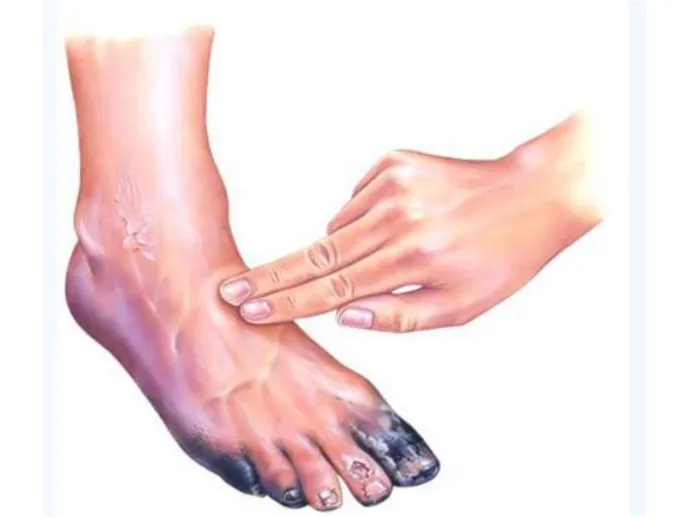Diabetic Foot Ulcers
Diabetic foot ulcers occur on the foot or below the ankle. Diabetic foot ulcers are non-healable wounds & these ulcers is a major cause of organ amputation due to diabetes.

Diabetic Foot Ulcers are a serious complication of diabetes that can lead to severe health issues. These ulcers are open sores that develop on the feet of individuals with diabetes due to poor blood circulation and nerve damage. Understanding the causes, symptoms, and treatment options for diabetic foot ulcers is crucial to prevent further complications.
Signs & Symptoms : Diabetic Foot Ulcers are characterized by a range of visible signs and symptoms:
- Open sores or wounds on the feet
- Slow healing of wounds
- Redness, swelling, or warmth around the ulcer
- Draining pus or foul-smelling fluid from the ulcer
- Pain, particularly during walking or when pressure is applied

Causes of Diabetic Foot Ulcers : Diabetic Foot Ulcers primarily result from a combination of factors associated with diabetes:
- Nerve damage (neuropathy): Reduced sensation in the feet makes it challenging to detect injuries or blisters.
- Poor blood circulation: Diabetes can damage blood vessels, leading to reduced blood flow to the feet, hindering the healing process.
- High blood sugar levels: Elevated glucose levels impede the body’s ability to heal and fight infections.
Investigation and Diagnosis: Diagnosing Diabetic Foot Ulcers involves a comprehensive assessment by healthcare professionals:
- Visual examination of the ulcer’s appearance and location
- Assessment of nerve function and blood circulation in the feet
- X-rays or other imaging tests to check for bone infections
Available Treatments:
Wound Care and Dressings:
- Pros: Effective for mild ulcers, helps in wound healing and preventing infection.
- Cons: May not be sufficient for severe ulcers, slow healing process.
Wound Debridement (removal of dead tissue):
- Pros: Enhances wound healing by removing unhealthy tissue.
- Cons: Might be painful, requires expertise.
Antibiotics:
- Pros: Treats or prevents infections in the ulcers.
- Cons: Overuse can lead to antibiotic resistance.
Hyperbaric Oxygen Therapy:
- Pros: Increases oxygen supply to the wound, aiding healing.
- Cons: Requires specialized facilities, may not be suitable for all cases.
Surgical Interventions:
- Pros: Removes infected tissue, helps deep ulcers heal.
- Cons: Invasive, longer recovery time, risk of complications.
 Pros and Cons of Treatment Options: Cons:
Pros and Cons of Treatment Options: Cons:
- Slow Healing: Diabetic Foot Ulcers can take a long time to heal, increasing the risk of infection and complications.
- Recurrence: Even with successful treatment, ulcers can recur due to underlying diabetes-related issues.
- Amputation Risk: Severe ulcers that don’t respond to treatment might lead to the need for amputation.
Pros:
- Preventive Measures: Timely treatment can prevent further complications like infections or amputations.
- Multidisciplinary Approach: Collaborative care involving healthcare professionals from various fields enhances treatment outcomes.
- Innovation: Advancements like wound dressings with growth factors or stem cell therapy offer promising solutions.
Diabetic Foot Ulcers demand immediate attention and a holistic approach. Individuals with diabetes should work closely with their healthcare providers to manage blood sugar levels, regularly inspect their feet, and promptly address any signs of ulcers. Early intervention and consistent care are vital to prevent serious consequences.
Get One Step Ahead Of Disease
Subsribe To Our Newsletter
Stay in touch with us to get latest news and special offers.
Address
Shekhar Sarraf Memorial Hospital, Aligarh
Call Us
+91-9548752611
Email Us
info@drkonika.com
